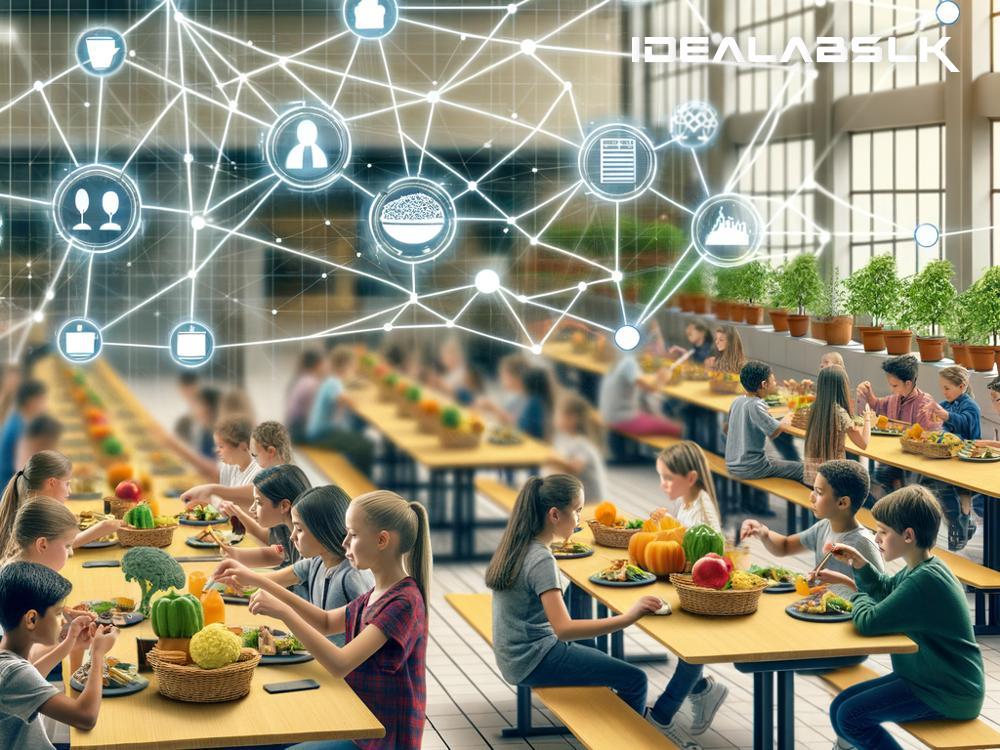Blockchain for Improved Food Safety in School Cafeterias
The importance of ensuring food safety in school cafeterias cannot be overstated. Parents and guardians entrust schools not only with their children's education but also with their health and wellbeing, which includes providing them with safe and nutritious meals. With the advancement in technology, an innovative solution known as blockchain has emerged, promising to revolutionize how school cafeterias manage and monitor food safety. In this blog, we'll explore how blockchain technology can be a game-changer in ensuring that the food served to our children is safe and healthy.
First things first, let's break down what blockchain is. Imagine it as a giant digital ledger or record book that is open for anyone to see. Every transaction or action recorded in this ledger is verified and secured by multiple checks, which makes it extremely difficult to tamper with the information. Once something is recorded, it's there for good. This level of transparency and security is what makes blockchain an appealing solution for various industries, including food safety in schools.
Now, how does this relate to our school cafeterias? Traditionally, tracking the journey of food from farms to our tables involves various steps and parties, making it hard to trace the origin of food and its safety status. This is where blockchain steps in, offering a seamless and transparent way to track every step of food's journey.
The Path from Farm to Plate
With blockchain, each step from the farm, processing, shipping, and finally to the school cafeteria can be recorded and verified. This includes details like where and how the food was grown, when it was harvested, how it was processed, and the conditions it was kept in during transportation. All these details are crucial for ensuring food safety and quality.
For example, if a certain batch of lettuce was found to be contaminated, blockchain technology could quickly identify and trace back every step of that lettuce's journey. This means schools could immediately remove the affected food from their menus, greatly reducing the risk of food-borne illnesses.
Preventing Food Waste
Blockchain also plays a crucial role in preventing food waste. By providing exact data on the food's journey and shelf life, cafeterias can better manage their food inventory, ensuring that they use the freshest ingredients without over-ordering or wasting food. This not only ensures that the meals are of the best quality but also promotes environmental sustainability.
Getting Everyone on Board
Implementing blockchain in school cafeterias requires collaboration between various stakeholders, including farmers, food suppliers, transportation services, and schools. Each party plays a vital role in recording accurate data at their step, which contributes to the overall safety and quality of the food. Training and educating these stakeholders about blockchain and its benefits are crucial for its successful implementation.
The Benefits Are Clear
The advantages of using blockchain for food safety in schools are compelling. It significantly reduces the risks of food contamination and illness, ensures that children are eating fresh and nutritious meals, and reduces food waste. Furthermore, it can also promote healthier food choices, as schools can easily access information about the nutritional content and sourcing practices of their food.
Looking Forward
While the idea of using blockchain in school cafeterias is still relatively new, some schools and organizations have already started to experiment with this technology, and the results are promising. As more schools recognize the potential benefits of blockchain for ensuring food safety, it is likely that we will see wider adoption in the coming years.
In Conclusion
Blockchain technology holds great potential for improving food safety in school cafeterias. By providing a secure and transparent way to track the journey of food from farm to plate, it can help ensure that our children are eating safe and healthy meals. While there are challenges to overcome, particularly in terms of collaboration and education, the benefits of implementing blockchain for food safety are clear. As we continue to embrace technology in every aspect of our lives, leveraging blockchain for the health and wellbeing of our children is a step in the right direction.

